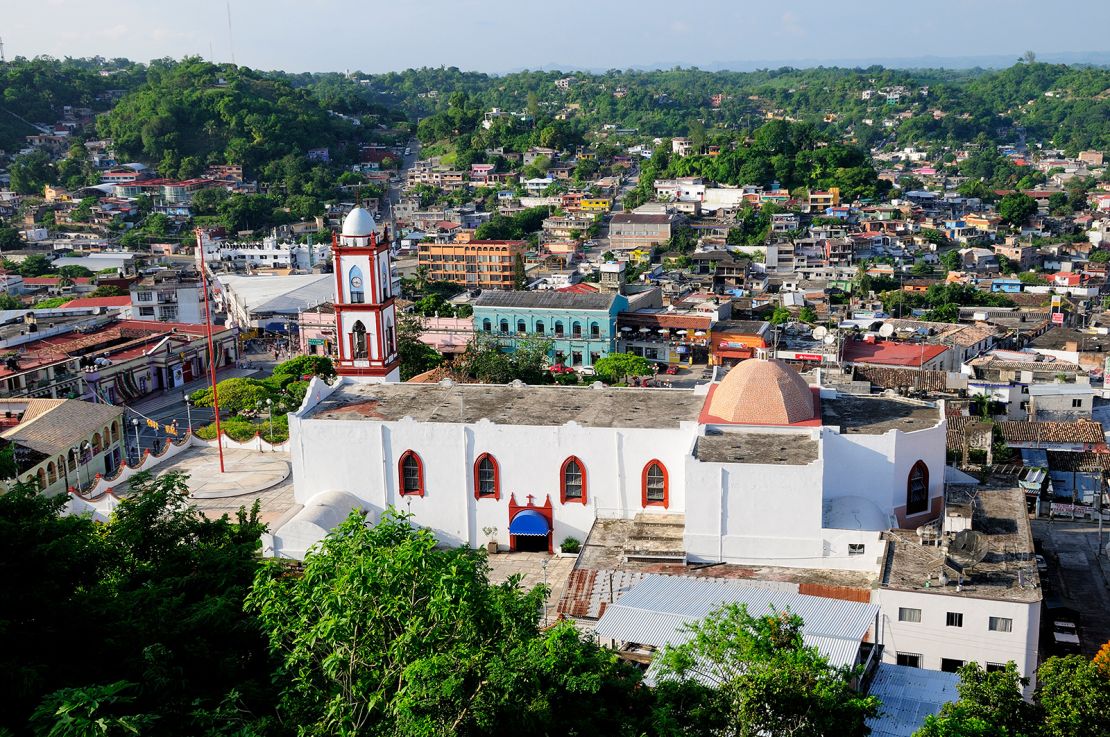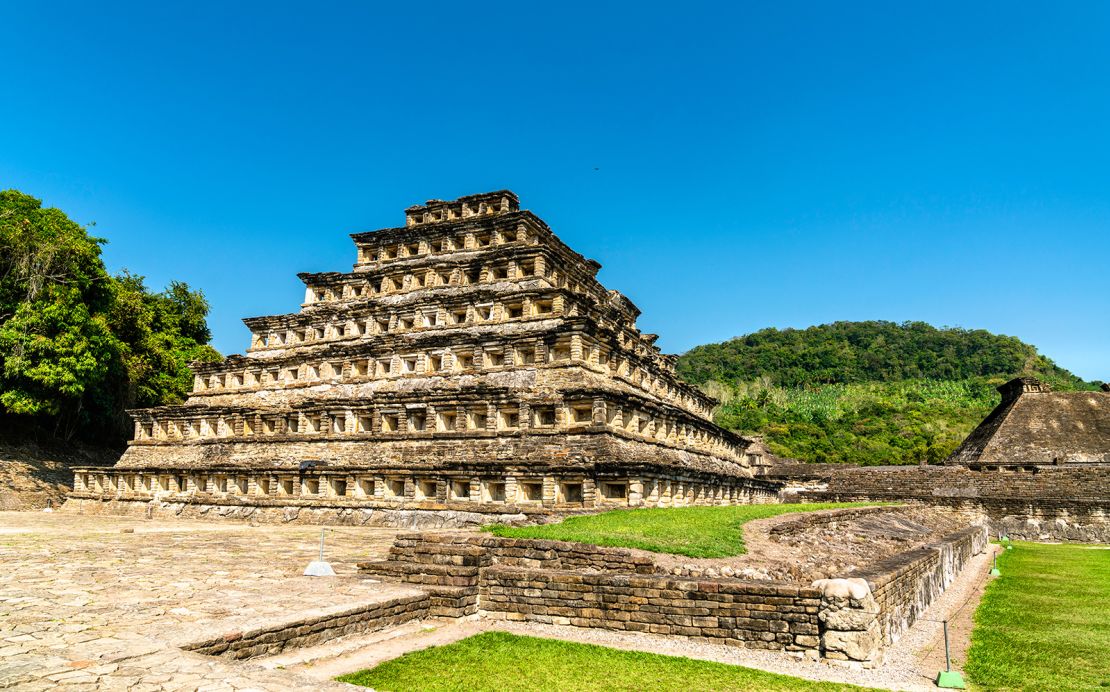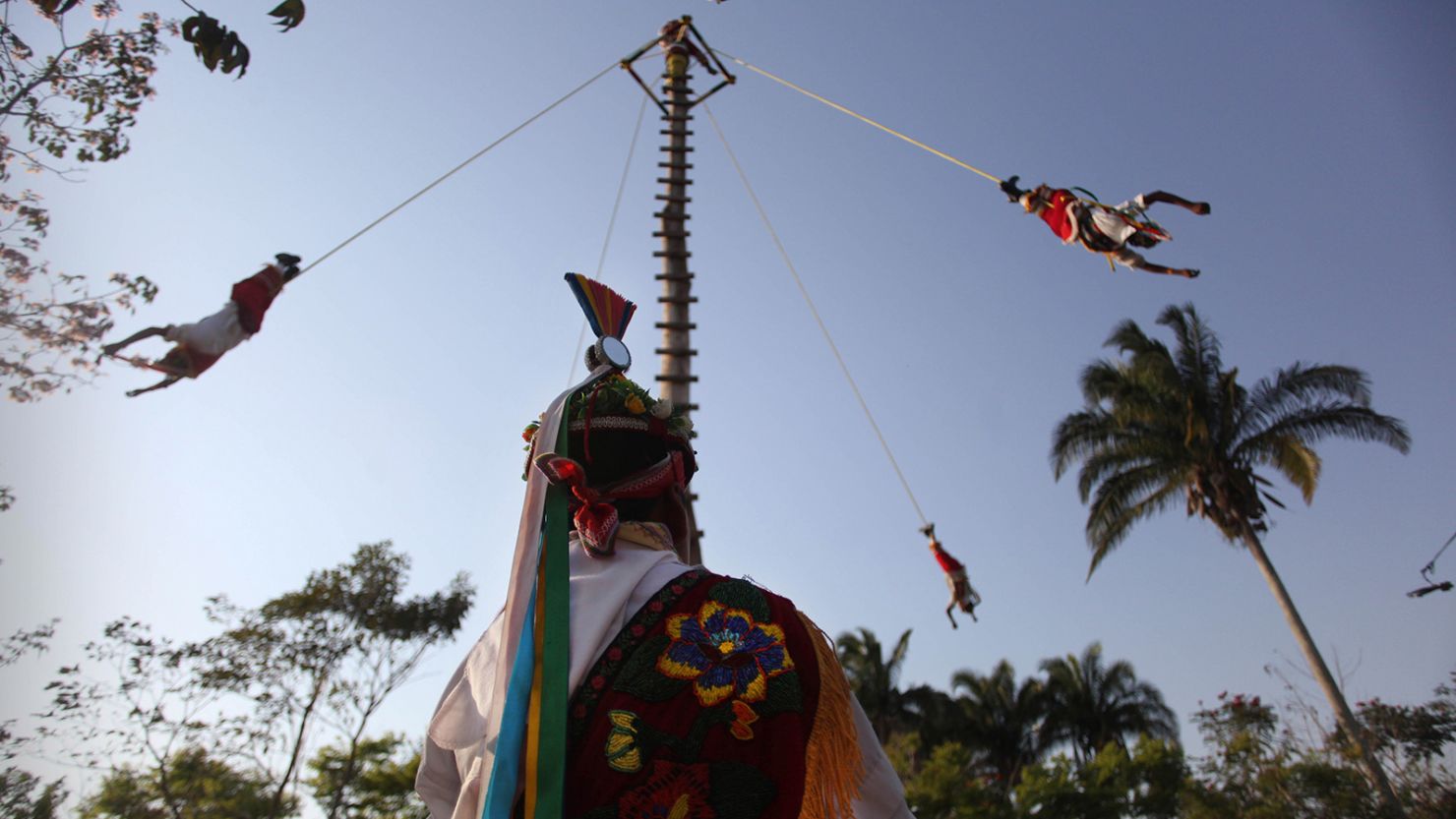Editor’s Note: CNN Original Series “Eva Longoria: Searching for Mexico” airs on CNN Sundays at 9 p.m. ET/PT. Sign up to CNN Travel’s four-part Unlocking Mexico newsletter for more on the country and its cuisine.
At first, there’s not much happening – just five men in white tops and tasseled red pants clinging to a small platform high atop a single pole. One plays a metal flute and beats a pattern on a drum. Eventually the other four rise in unison and launch into the air, their ankles connected to the top by ropes as they spin around the pole.
Each time the four men complete a circle, the ropes unwind a bit more and the men fly closer to the ground, arms outstretched as they soar along. All the while, the caporal at the top keeps playing his music and banging the drum to accompany the flyers until they reach the ground and the ritual is done.
The Voladores of Veracruz in Mexico have a history that goes back at least 1,400 years. It is believed that the ritual originated in a time of drought and famine when the flyers were sent to appeal to the gods “for rain to fertilize the earth,” according to a government report (pdf).
Although tribes in other regions may have originated the practice, it is now associated with the Totonac people who kept the ritual alive. The epicenter of this is the Veracruz “pueblo magico” (magic town) of Papantla.
To the outside observer, it’s a simple yet striking chain of events to watch. For the participants, there are layers of meaning touching on fertility, harmony with nature and a connection to the ancestors. After a brief ceremony on the ground, the group climbs the pole. At the top, the caporal, or chief, plays songs on the flute that are dedicated to the sun and the four winds from four directions, also symbolizing the elements of fire, water, air and earth.
The embroidered patterns on the costumes and the mirrored elements of the headdresses are all imbued with meaning. There are supposed to be 13 full rotations before the flyers reach the ground, with the four added together being 52.
‘Gratitude for what nature has given us’
Recognized as “intangible cultural heritage” in 2009 by UNESCO, the ceremony “brings to life the myth of the birth of the universe,” the United Nations cultural organization said. “The ritual ceremony of the Voladores expresses the worldview and values of the community, facilitates communication with the gods and invites prosperity.”
“When the flyers train, they learn the original language, the meaning of the songs, they learn gratitude for what nature has given us,” says Mario Ramírez, who did his first circuit around the pole 18 years ago.
He now runs the Escuela de Niños Voladores based in Temático Takilhsukut Park in Papantla. The school has 130 children enrolled. Some are teenagers; some are as young as 6.
“The flying ritual has never had a learning age, it is a project of a lifetime,” he says. “Children never finish learning their practices, but rather what they learn as young children they put it to the test in their activities.”
As part of their training, students participate in reforestation efforts, learning that they must grow new trees to replace the ones fashioned into poles that have been taken to use in their rituals. These poles are usually at least 18 meters high (60 feet), though the largest will extend to 40 meters (131 feet). In some permanent performance parks, metal poles have replaced the wooden ones.

“My father was a flyer, his father was a flyer, and so on,” says Ramírez. “This is how it is for most of the students: they come from a family of flyers and are continuing the tradition.”
Now the costumed flying men appear all over Mexico, from the beach resorts of the west coast to the east coast and at many points in between.
Nearly all of the Voladores trained in or around Papantla, where the flying schools prepare young people to take over for those who are eventually aging out. Women are not allowed to join – though there is a small community of female flyers in Cuetzalán, in the neighboring state of Puebla.
Coffee, ancient ruins and an overlooked capital city
Men with ankle ropes flying deftly around a pole are not the only export from this state, though.
Veracruz is one of the prime coffee states of Mexico, with some of its highland farms producing the most sought-after varieties in the country among connoisseurs. Vanilla is also native to this area.
Food from here shows up on plenty of international menus. This is home of the jalapeño pepper, plus a signature fish dish in a spicy tomato sauce, and the complex mole de Xico sauce that takes much of the day to prepare.
The most important archaeological development in Veracruz is El Tajín, the excavated ruins from a site neither Aztec nor Maya that was active roughly from 800 to 1200. It was once a city of 15,000 to 20,000 people, and preserved carved reliefs and paintings have shed light on rituals and daily life of the times. Naturally, this is a prime spot to see the Voladores in action as well, with ties to traditions that came before.

The lush mountain city of Xalapa, founded in 1313 before the Spanish arrived, is actually the capital of the state, not the more populated namesake port city of Veracruz, where Hernán Cortés’ conquistadors arrived 206 years later.
It has a pedestrian-friendly central historic district with a beautiful shady park and a church dating back to 1641. The big draw, however, is Mexico’s second most important archaeological museum after the one in Mexico City. The Xalapa Museum of Anthropology contains Olmec and Totonac relics, including giant stone heads created thousands of years ago by coastal residents of the region.
Hiking and music in Veracruz
Outside the city, hiking trails lead to vistas of green mountains covered in jungle vegetation as well as Texolo and La Monja waterfalls. Several rivers in the state, including the Filo-Bobos and the Antigua, offer thrilling white-water rafting routes of class III and IV.
When it’s time to party, Veracruz has its own particular style of music, known as son jarocho, utilizing the tiny guitar-like jarana instruments, improvisational sung verses and 6/8 time signatures.
Catch an annual Son Jarocho festival in early February in the riverside town of Tlacotalpan. There’s a side dose of Mexican Catholicism since it coincides with the Candelaria mass and a procession where the Virgin of Candelaria patron saint is paraded through the town and then down the river, accompanied by a flotilla of boats.
Eva Longoria visits Veracruz in Sunday’s “Searching for Mexico” episode.
“Probably my favorite episode was Veracruz, which they call ‘the port of spice’ because, historically, everything came into the Americas through that port,” Longoria said.
“It’s interesting to see what has survived and what has been folded into Mexican culture and then what was rejected. I hope people respond to it, because it’s just a beautiful culinary journey.”
For more on the country and its cuisine, sign up to CNN Travel’s four-part Unlocking Mexico newsletter.




